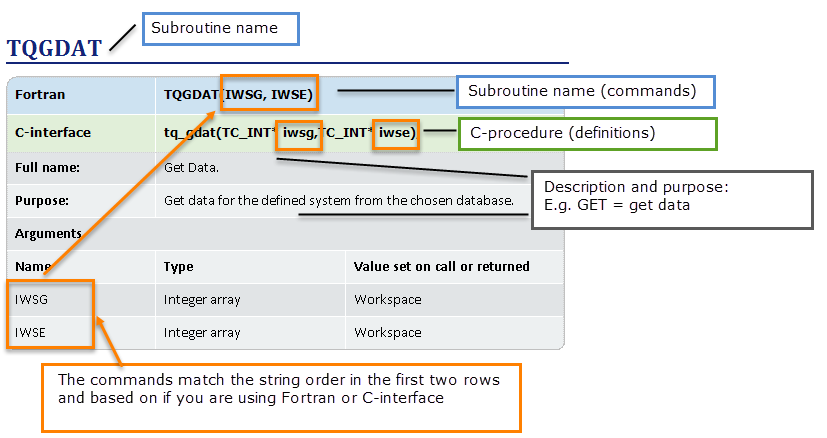TQSSC
| Fortran |
TQSSC(IDENT, INDEXP, INDEXC, VALUE, NUMIN, IWSG, IWSE) |
|
|---|---|---|
| C-interface |
tq_ssc(TC_STRING stream,TC_INT iph,TC_INT icmp,TC_FLOAT value,TC_INT icond,TC_INT* iwsg,TC_INT* iwse); |
|
|
Full name: |
Set Stream Constituent Amount. |
|
|
Purpose: |
Set the amount of phase constituent in a stream. |
|
|
Comments: |
The last one takes effect if the amount of the same phase constituent have been set several times, i.e., the amount cannot be set additively. |
|
|
Arguments |
||
|
Name |
Type |
Value set on call or returned |
|
IDENT |
Character*24 |
Set as identifier of the stream. |
|
INDEXP |
Integer |
Set as a phase index |
|
INDEXC |
Integer |
Set as a constituent index. |
|
VALUE |
Double precision |
Set to an amount of the constituent INDEXC in the stream. |
|
NUMIN |
Integer |
Returned as identification of the input constituent in the stream. |
|
IWSG |
Integer array |
Workspace |
|
IWSE |
Integer array |
Workspace |
Note the following conventions to distinguish between the programming languages.
- Routines starting with TQXXX, for example, TQGDAT, are in the Fortran interface
- Routines starting with tq_xxxx, for example tq_gdat, are in the C-interface.
- In Fortran, all routines are subroutines and do not return any values except where explicitly declared as functions.
- All the C procedures are declared as void and do not return any values except where explicitly otherwise declared.
An example of how to read the subroutine definitions.
